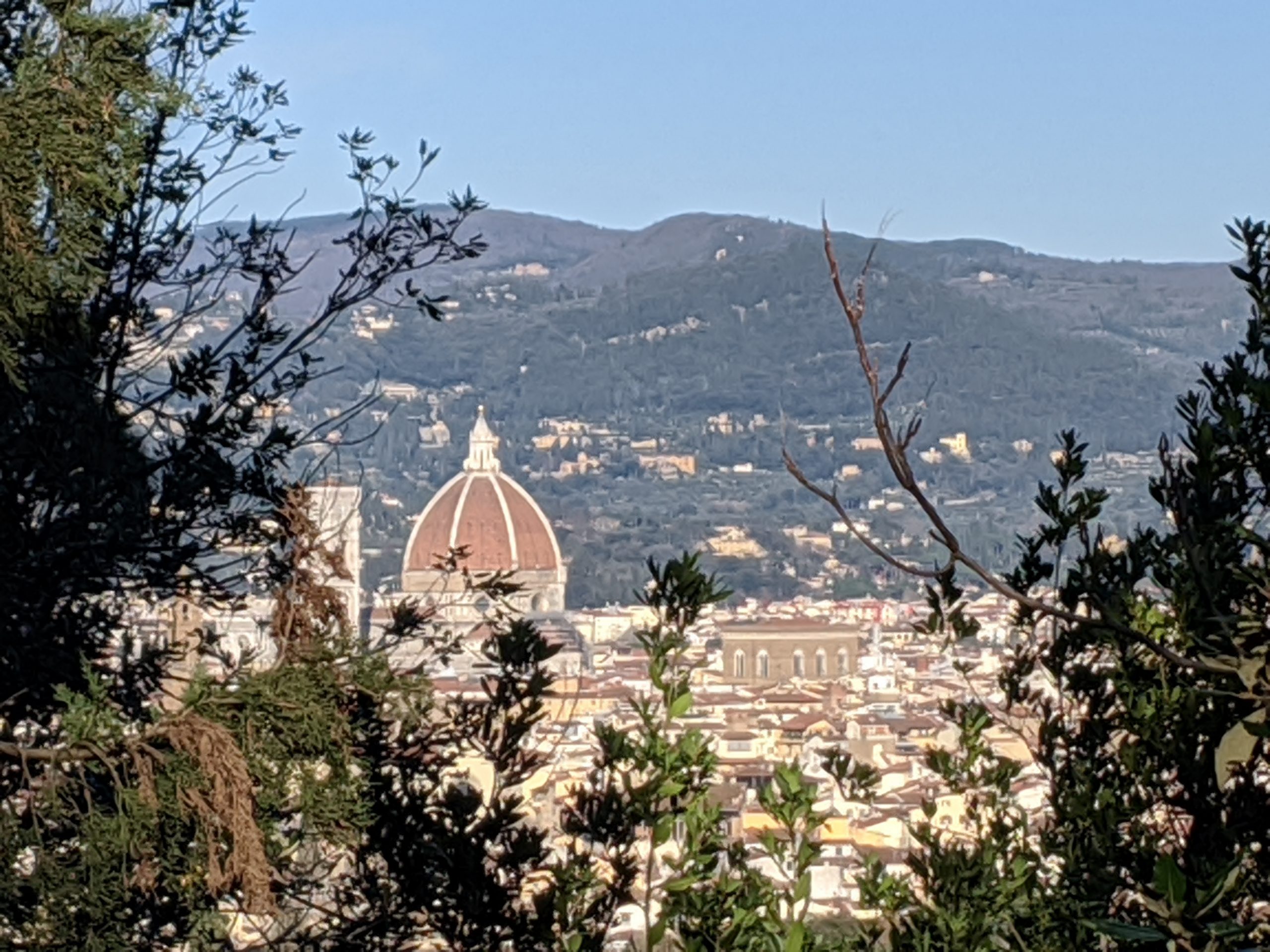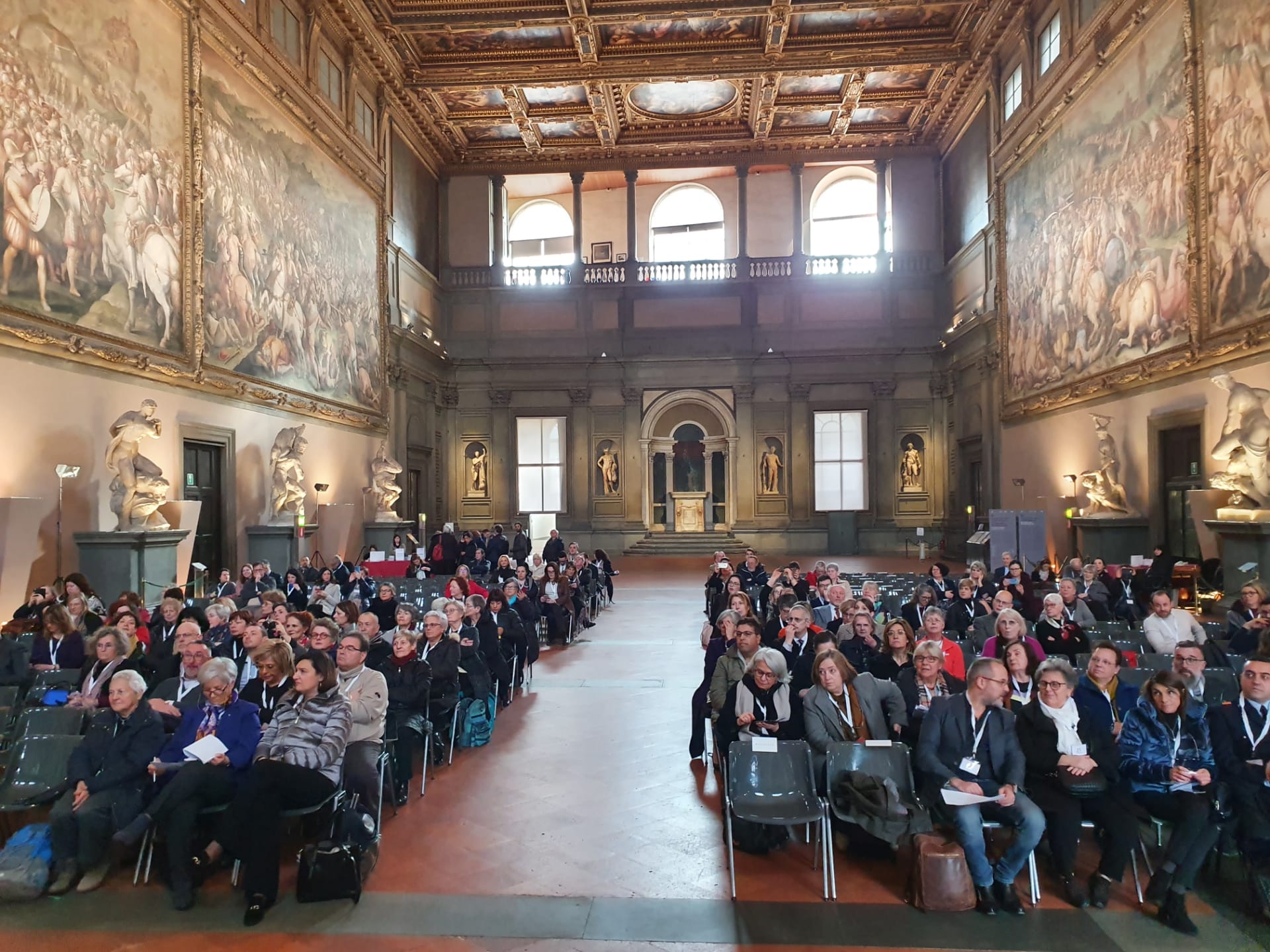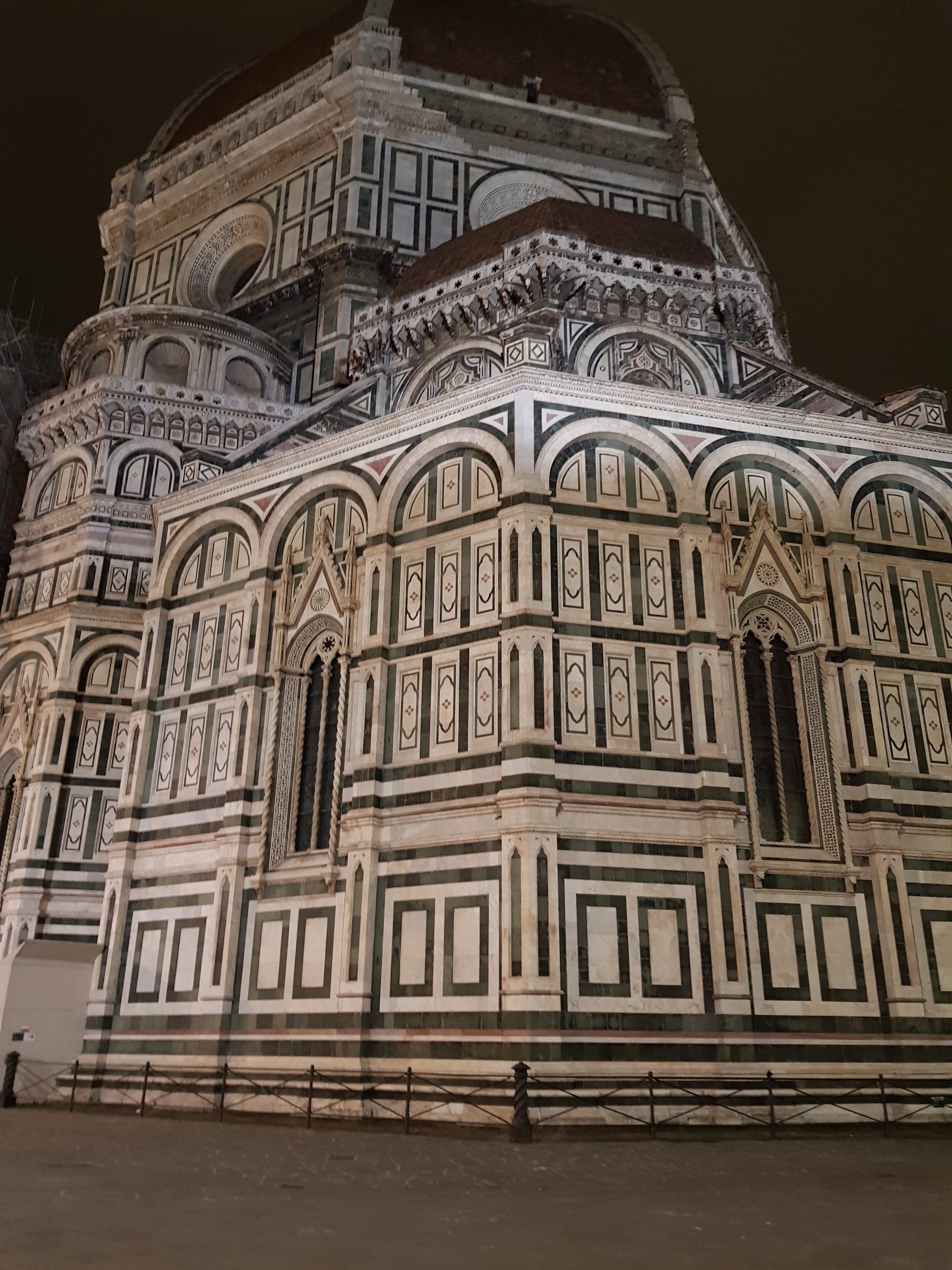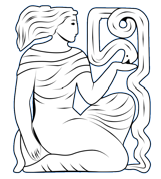| Sue Hawkins, Kingston University | The UKAHN Bulletin |
| Volume 8 (1) 2020 | |
As we all know Florence Nightingale was born on 20 May 1820, in Florence, Italy. To mark the occasion of 200 hundred years since her birth, a conference was organised in her birthplace, by the Italian Nurses’ Association/Nursing History Group (CNAI: Consociazione Nazionale delle Associazioni Infermiere) in collaboration with the European Association for the History of Nursing (EAHN).
The International Conference on the History of Nursing, Florence 2020, was held on 13-15 February 2020 and was attended by 176 delegates from 22 different countries from Europe and much further afield. Countries included Australia, Belgium, Canada, Chile, Croatia, Denmark, Estonia, Germany, Israel, Italy, Japan, Malta, Netherlands, Norway, Poland, Portugal, Slovakia, Slovenia, Spain, Switzerland, United Kingdom and the United States.

There was a packed programme of 110 stimulating papers presented across several simultaneous sessions, and four excellent Key Note addresses on the first and last days of the event. There was also a Poster Session and a session dedicated to Italian research. Two tours were organised on the last afternoon, which proved very popular: 40 attendees chose to visit Villa Colombaia, Florence’s birth place; while twenty delegates picked the tour of Spedale degl Innocenti (Hospital of the Innocents), a beautiful mediaeval institution which has provided care of infants and children continuously for more than five centuries.
But to the conference itself. It is impossible to do justice to the wide variety of subjects covered, from a wealth of different cultures, so this review has been compiled by various delegates representing the UK Association for the History of Nursing, to attempt to a bring a flavour of those gorgeous few days in Florence, when the sun shone brilliantly and unexpectedly, and Covid-19 was a distant rumour.
Helen Sweet (University of Oxford) kicks us off with her impressions of the opening day.

After a wonderful free morning wandering through Florence, spending time in the Uffizi Gallery and gazing at the Ponte Vecchio, the conference registration opened in the extraordinary Salone dei Cinquecento of the Palazzo Vecchio. This offered the most amazing surroundings for the opening of the conference – ceiling gazing had to be excused as it was exquisitely decorated by Vasari, and the room included statues by Michelangelo and Bandinelli and surrounding frescoes, which were equally impressive and equally distracting! It was a tall order for the speakers to vie with their surroundings for the audience’s attention!

Opening introductions were presented by main conference organisers Cecilia Sironi and Anna La Torre who introduced us to the many uses of the Italian welcoming expression, ‘Ciao’, and then to a number of officials including the CNAI President, the Mayor of the City of Florence, plus representatives of other Institutions including the head of the Italian Red Cross. Overall, the significance of Nightingale’s contributions to modern nursing and her iconographic image, were repeatedly noted by these officials, all of whom were clearly proud of their connection with her in the city of her birth.

Professor Christine Hallett, EAHN President and UKAHN Chair, then gave the opening keynote: ‘Visions and Revisions: Florence Nightingale’s Nursing Ideals’ which challenged some of our preconceptions of Miss Nightingale’s contributions to post-Crimean modernisation of nursing through better historical contextualisation of her writings. She examined Nightingale’s ideas through her own publications and letters – arguing that the consistency and coherence in these might better be understood viewed in the cultural, medical and spiritual context of her time. She was drawing upon ideas of ‘muscular Christianity’, the arcane mid-century medical theories of inflammation and putrefaction, and a sense of ‘proto-feminism’ which was, Hallett argued, ahead of its time.

Paul De Raeve, Secretary General at European Federation of Nurses, presented the second keynote: ‘Nursing History strengthened by EU Legislation’, looking at the value of Nursing History within the field of nursing and lending support to ongoing nursing history research. However, the majority of his paper was devoted to current practice and the promotion and protection of nurses and the nursing profession with particular reference to the EU and European Integration. The question voiced by Sue Hawkins, at the end of his presentation was where British nursing and, by extension, nursing history might stand post-Brexit? The answer appeared to suggest that support would continue providing standards were maintained on the British side!
The opening session concluded with a splendid reception downstairs in the Sala d’Arme (weapons room). A great start to a memorable conference!

The next day, we moved location to Il Fuligno, a beautifully restored mediaeval monastery now used to host events in the city. The unassuming street entrance led to an amazing collection of rooms and a typical Italian courtyard. Amanda Gwinnup, a PhD student at the University of Huddersfield, was impressed by the warm and accepting atmosphere of the conference, which allowed for a free exchange of information and ideas as well as the development of new professional and social relationships.

We made the most of the gorgeous weather between sessions, taking refreshments and lunch in the courtyard, where, as Amanda observes, everyone was approachable and the conversations that began during the sessions continued outside. One of the themes that seemed to take hold during the conference was the examination of the current state of nursing as profession. Papers about historical events, even those centuries old, managed to be applicable in today’s political, social and economic climates. People discussed the impact that Brexit will have on nursing in the United Kingdom, Europe and elsewhere. There was a sense that the high standard of nursing curated over the centuries was at risk of becoming diluted due to budget cuts and a lack of educational funding.

Sarah Rogers (also a PhD student at University of Huddersfield) felt spoilt for choice when faced with a programme of four simultaneous sessions. How to choose which to go to and which to miss out on. There was a superb range of international speakers who presented their research. One paper she attended was that by Carol Helmstadter who presented her work on nursing care in the Crimean War, and who opened by acknowledging the huge contribution of Anna La Torre to her research. Anna had sent Carol scores of photographs of Italian primary source material, which she had also translated into English and the international collaboration evident in this paper was really impressive. Carol’s inspiring work compared the nursing care given to British, French and Italian soldiers during the Crimean War by their respective armies. She traced the development of Sardinian military nursing prior to the Crimea and argued that this contributed to the Italian soldiers receiving better care. Perhaps controversially at a conference to celebrate Nightingale’s bicentenary, Carol also argued that, despite her positive impact on the treatment of the British military, the care given to Italian soldiers was more extensive and superior.

Jane Brooks (University of Manchester) also picked out a paper as one her highlights: Alison Fell’s paper on French war nurses and the Commission for the Prevention of Tuberculosis in France. As Jane says, Alison’s presentation on the fight against tuberculosis brought together her meticulous research skills, her appreciation for the aesthetic in history and her knowledge of nursing in the early twentieth century. She highlighted the presence of TB in the French military and the loss of soldiers to the war as they were discharged on health grounds. Her analysis of the Commission for the Prevention of Tuberculosis in France demonstrated the international links between the French public health lobby and the Rockefeller Foundation as the latter was harnessed to support the fight against TB from 1917-1922. As Fell demonstrated, public health nurses used their war service to identify themselves as combatants in a new war against disease, thus creating a space for themselves in the post-war world. This was an outstanding presentation that extended our knowledge and understanding of early twentieth century public health motivations beyond the Anglophone world.
Villa Colombaia
Claire Chatterton (Open University and Royal College of Nursing) took the opportunity offered to visit Florence Nightingale’s birthplace, Villa La Colombaia – a house that is not normally opened to the public. Situated on a hill overlooking the city, the famous Duomo and the red rooftops of Florence are visible through the trees at the bottom of the garden. Since 1957 the Villa has been run by the Institute of the Sisters Adoring the Blood of Christ and one of the sisters was there to greet us on arrival. In the past it had been used as a school and we were told that there were plans to use the building again for educational purposes. As part of the tour, delegates were shown the room where Florence Nightingale was born on the 12th May 1820. According to one of Nightingale’s biographers, Mark Bostridge, her parents were on an ‘extended honeymoon tour’, hence why both she and elder sister (Frances Parthenope) were born in Italy. They gave their new baby the English name of her birthplace; a move which was later to lead to the popularity of the name Florence for many Victorian girls (a name which interestingly is again in vogue in the UK). Baby Florence was also christened in the villa but by the end of the year they had left Italy to make their journey home to William Nightingale’s Derbyshire estate. It was such a treat to be able to visit Florence’s birthplace, and to enjoy it on an such unseasonally warm February afternoon.
For me, the overwhelming impression was the atmosphere of international collaboration which was evident all around. It hit me particularly at the session on Histories of Nursing Practice, which I attended in the morning where I heard speakers from Estonia, Switzerland, Spain, Canada and Chile. It was fascinating to hear of the history of nursing from such a diverse group of countries. Most impressive (for courageousness, if nothing else) was the contribution from Lidia Elena Osorio-Olivares from Chile. Lidia had travelled over 7,000 miles (12,000 kilometers) to give her paper, and arrived to find a misunderstanding regarding the language of the conference put her delivery in jeopardy. Lidia had expected to be able to present her paper in Spanish or Italian, and having no English was at a loss to know how to proceed. But to the rescue came Lucilia Mateus Nunes from Portugal. Lucilia had not met Lidia before, and knew nothing about her research, yet immediately offered to provide a simultaneous translation. And a fascinating paper it was, set in the Tarapaca region in the very north of Chile, in the driest desert of the world. Lidia told us of her project to develop a history of the introduction of a modern nursing service to this desolate place in the 1950s, where nurses provided healthcare services to the widely dispersed population, travelling at high altitudes in blazing sun and freezing cold to get to the remote villages. The history of these early pioneers is not written down, and Lidia told us how it was the objective of the project to capture these stories through oral history and life history studies. It was humbling to see these two women working together, in different languages, to help the rest of us understand Lidia’s work.
I think with every confidence I can say the conference was an unprecedented success. Have so many people, from so many different countries, ever gathered together before to discuss the history of nursing? I suspect not, and Anna La Torre and Cecilia Sironi have made their own contribution to nursing history by enabling this marvellous gathering to take place. Our heartfelt thanks to you both and for choosing the beautiful city of Florence as its backdrop.
I’d like to thank Jane Brooks, Sarah Rogers, Claire Chatterton, Helen Sweet and Amanda Gwinnup for sharing their memories of Florence 2020 with me and enabling me to write this review of an unforgettable conference; and also for their kind sharing of photographs taken during the conference and permission to reproduce them here.

